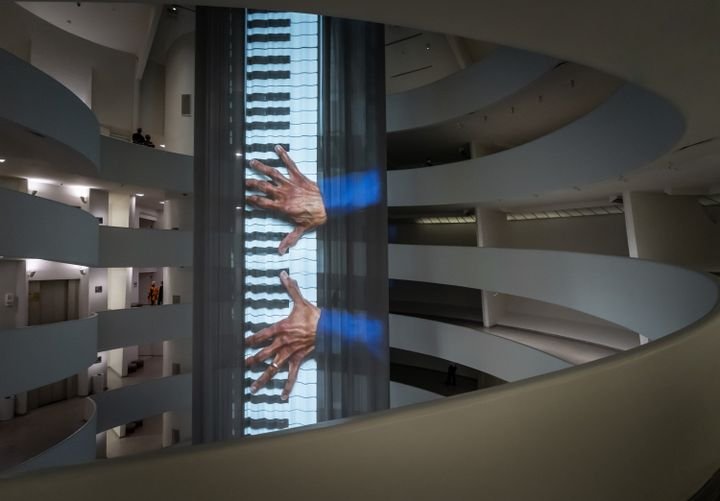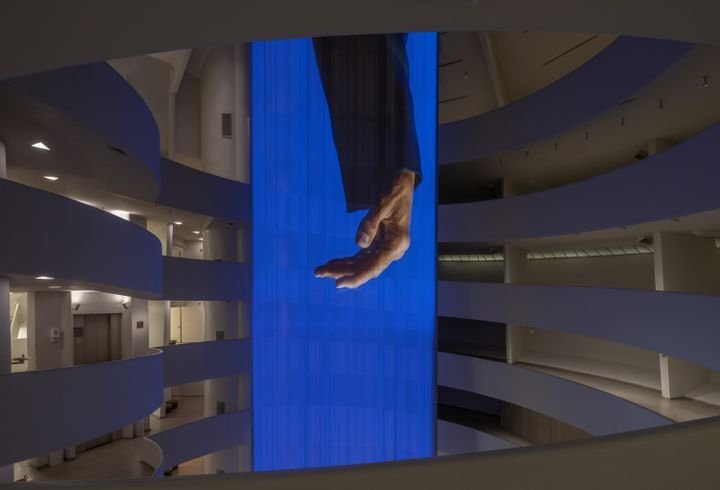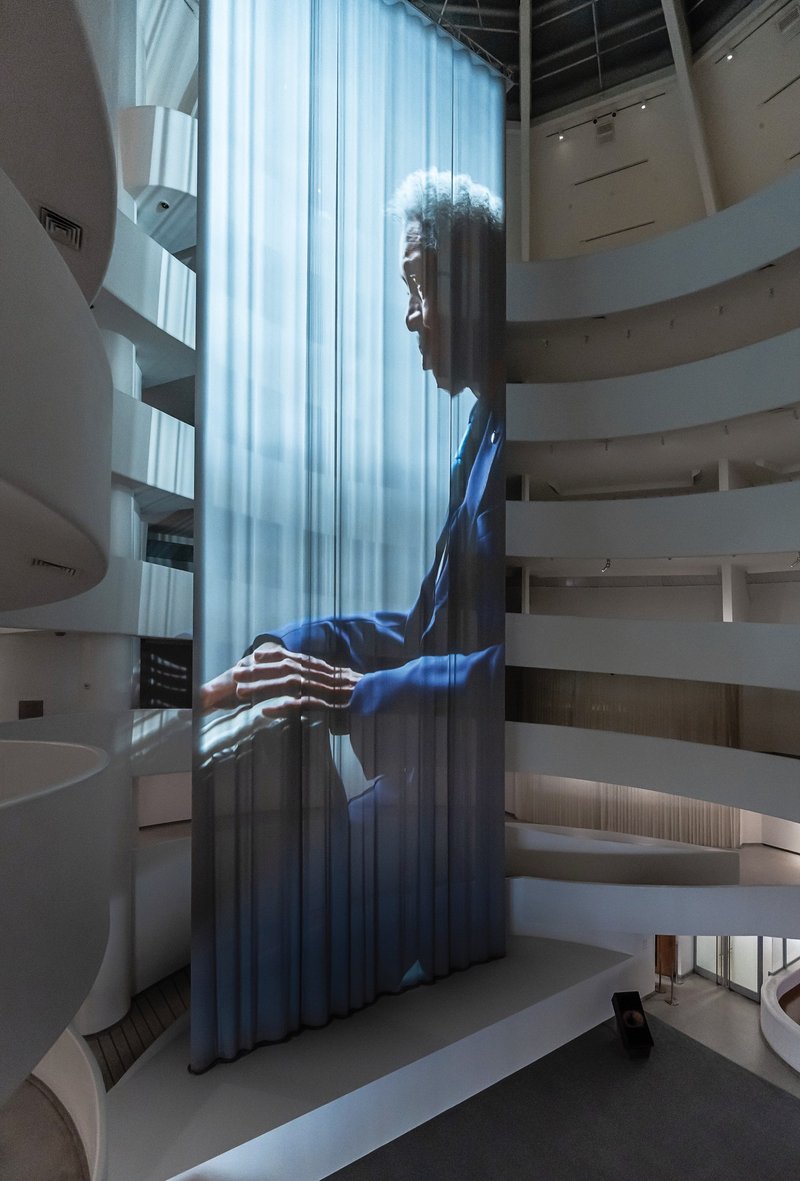Solomon R. Guggenheim Museum, New York, USA. Second Nomination

The project
Conceived in the summer of 2020, Anthem was created at a moment that forced (and allowed) institutional curators to rethink the now professionalized (and industrialized) practice of exhibition-making. It was the outcome of asking questions. Questions, such as "What is a museum space? Who is it for? Can we create a space to take up the challenges, contradictions, contexts, and historical conditions? Can we create a space that the artist can act?" Anthem casts the Frank Lloyd Wright-designed rotunda as a social space, as a site of assembly and amplification. It created a space for us to think about the relationship between resonance and coalition work. This project redefines coalitions as relational politics of collective resonance. To resonate is to resemble, but not exactly to be the same.

Wu Tsang’s new commission, Anthem (2021), was conceived in collaboration with the legendary singer, composer, and transgender activist Beverly Glenn-Copeland and harnessed the Guggenheim’s cathedral-like acoustics to construct what the artist calls a “sonic sculptural space.” This site-specific installation revolved around an immense, eighty-four-foot curtain sculpture suspended from the oculus. Projected onto this luminous textile was a “film-portrait” Tsang created of Glenn-Copeland improvising and singing passages of his music, including original a cappella melodies and his rendition of the spiritual “Deep River.” Conjuring an alluring and reverberant aura, Anthem wove Glenn-Copeland’s music into a larger tapestry of other voices and sounds placed throughout the museum’s circular ramp, building a soundscape that wrapped around the space. Working in collaboration with the musician Kelsey Lu and the DJ, producer, and composer Asma Maroof, Tsang developed this arrangement of sounds as a series of improvisatory responses inspired by the call of Glenn-Copeland’s voice. Visitors were encouraged to traverse upward from the bottom of the museum to the top of the building, and vice versa, and explore how Anthem ascends and descends along the spiral path.

The title of this exhibition, Anthem, drew from lesser-known histories of the word, which then meant antiphon, a style of call-and-response singing associated with music as a spiritual practice. Unlike a conventional anthem, which amplifies the power of a song through loudness and uniform sound, this installation enhanced the call of Glenn-Copeland’s voice by combining it with ambiguous vocal timbres, changing tints of ambient sound, and other heterogeneous sonic and visual textures. Within this lush yet complicated auditory environment, Tsang’s Anthem also cultivated moments of quiet, rest, and reflection, reimagining the rotunda as a compassionate atmosphere for collective listening and looking.